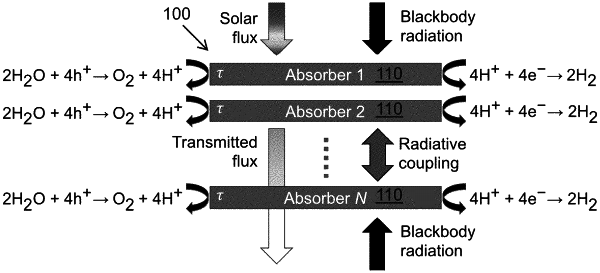|
11. A light-driven system (100) for driving water electrolysis, comprising a plurality of light-absorbing units (110) configured such that light goes through one light-absorbing unit to get to the next light-absorbing unit, wherein a non-electrically conductive phase is disposed between adjacent light-absorbing units, wherein each light-absorbing unit (110) operates independently and in parallel to net drive water electrolysis, wherein the light-absorbing units (110) have near-optimal bandgaps that are about 0.25 eV to about 2.0 eV larger than a free energy required to drive water electrolysis.
|
